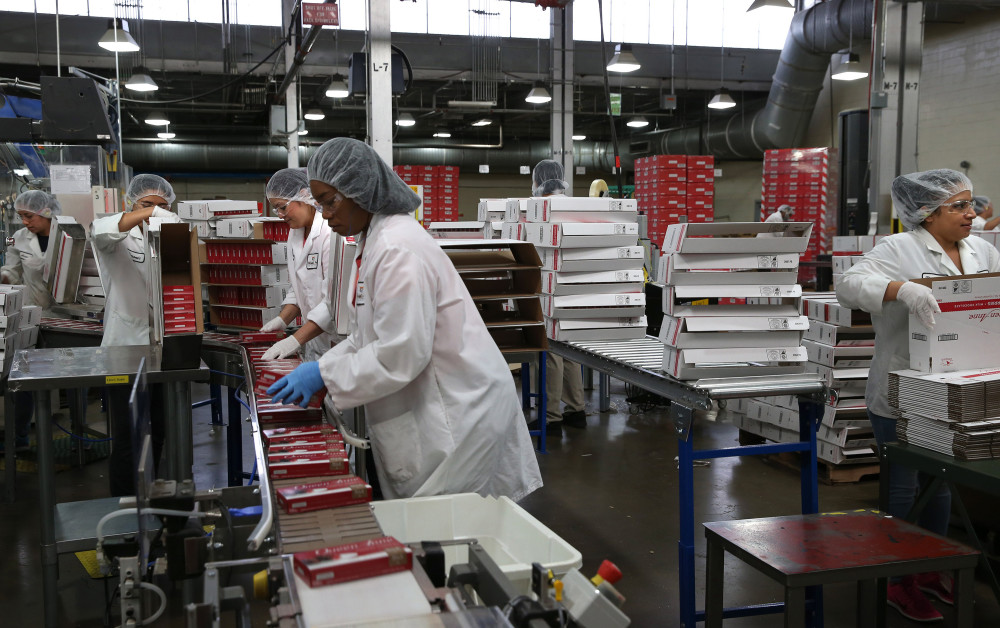By Robert Channick
Chicago Tribune.
CHICAGO
The school year’s opening bell has yet to ring, and already a multitude of children are preparing to sell candy bars, cookie dough and coupon books.
School fundraising season is here, with children and their parents pitching family, friends and cornered co-workers to support everything from cheerleading competitions to new band uniforms.
Like it or not, fundraising is an obligation, an opportunity and an increasingly important part of the fiscal plan for many schools, where budget deficits have forced cutbacks in course offerings and activities. It is also big business, with a sophisticated network of for-profit manufacturers and distributors teaming up with school leaders behind the pint-sized Willy Lomans.
The fundraising industry generates $3.3 billion in annual sales, of which $1.4 billion goes to participating schools, churches and other organizations, according to Jon Krueger, executive director of the Association of Fund-Raising Distributors and Suppliers, an Atlanta-based trade association representing 350 member companies.
The time-tested business model enlists children on the front line of sales, peddling an array of consumer products. Even as retail migrates online, Krueger said having children, and more often their parents, wheel product door-to-door and make impassioned pitches on behalf of activities and causes continues to drive successful school fundraising.
“The sales model really hasn’t changed a lot over the years,” Krueger said. “Some companies and schools are utilizing technology, but it’s still that personal touch of having the kids involved that really makes the programs as effective as they are.”
A study by the National Association of Elementary School Principals showed that 94 percent of schools relied on fundraisers to supplement money from district, state and federal sources. Financial woes at many school districts have made the need for fundraising even more acute in recent years.
Chicago Public Schools, for example, whose debt was downgraded to junk status, faces a $1.1 billion deficit for the upcoming school year, a shortfall that affects everything from elementary school sports to special education. Many CPS schools participate in fundraising activities.
“It’s an unfortunate sign of the times that school budgets often do not have the capacity to fund essential school programs that are needed to prepare students for the future,” said Gail Connelly, NAESP executive director. “There’s no doubt that schools rely on these funds, often heavily, which further stretches principals.”
World’s Finest Chocolate, one of the largest players in the for-profit fundraising industry, makes and distributes cases of its namesake candy bars from a Chicago factory, marketing them through 20,000 schools across the U.S. In June, the 76-year-old family business also acquired Market Day, a purveyor of frozen food for school fundraising sales. Terms of the deal were not disclosed.
Founded in 1939 by Ed Opler as the Cook Chocolate Company, it began product fundraising 10 years later, selling candy in partnership with a suburban high school band. Renamed World’s Finest Chocolate, the company is now run by Eddie Opler, the founder’s grandson. It has sold more than 6 billion candy bars and raised $3.8 billion for schools and other organizations since pioneering the fundraising model.
The company moved into its 500,000-square-foot factory in 1985.
World’s Finest Chocolate offers a variety of its chocolate bars in 60-count $1 product cases and 30-count $2 product cases, splitting the revenue 50/50 with the fundraising organization. A sales team of 250 works with school districts and parent-teacher organizations to get in the front door, and then sets up specific projects within the schools.
Last year, World’s Finest Chocolate helped 80 CPS schools raise more than $320,000, the company said.
Jason Cort, managing director of fundraising at World’s Finest Chocolate, said that while kids bring the unopened boxes home from school, it’s usually the parents who end up moving most of the merchandise.
“We sell a lot of chocolate in the parents’ workplaces,” Cort said.
August, September and October are the peak sales months for World’s Finest Chocolate, and for the school fundraising industry at large, according to a survey by the trade association. Fundraising activity continues throughout the school year, however, making it subject to the law of diminishing returns, Krueger said.
“The advice our members give their customers is to cut back on the total number of fundraisers you’re doing and try to mitigate the risk of fundraising fatigue and really just focus on those programs that yield the best results, so that you’re not burning out your support base with constant outreach,” Krueger said.
While there are only so many causes and chocolate bars that can be sold in one school year, there is a side benefit to the fundraising sales model. If any product remains unsold, the family may just end up eating it.














































































































































































































































































































































































